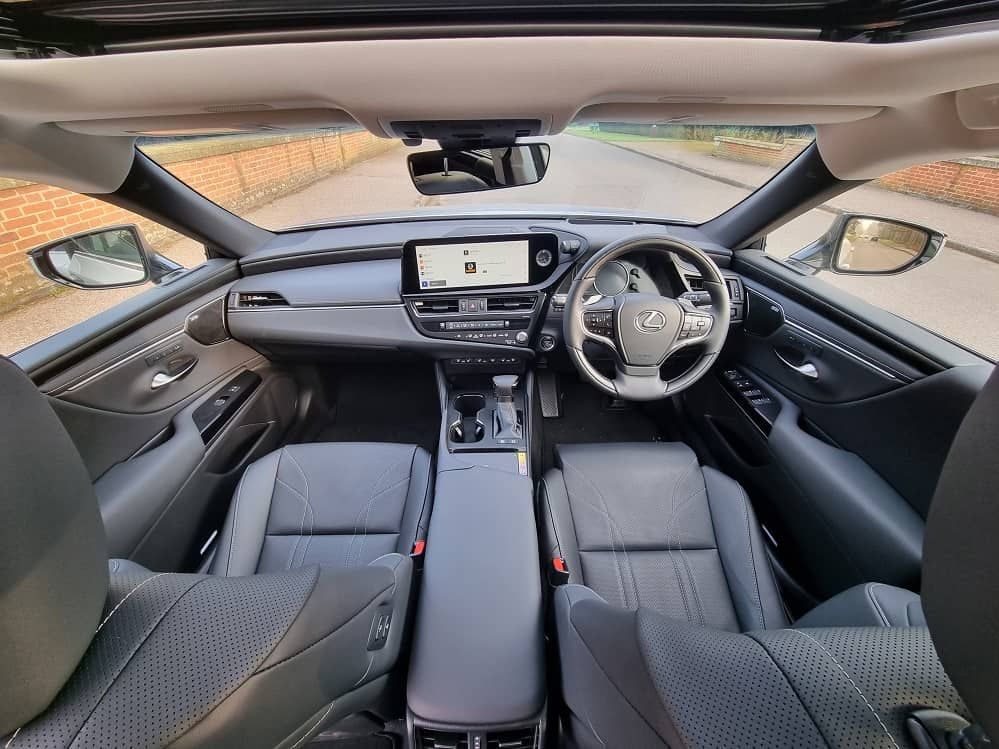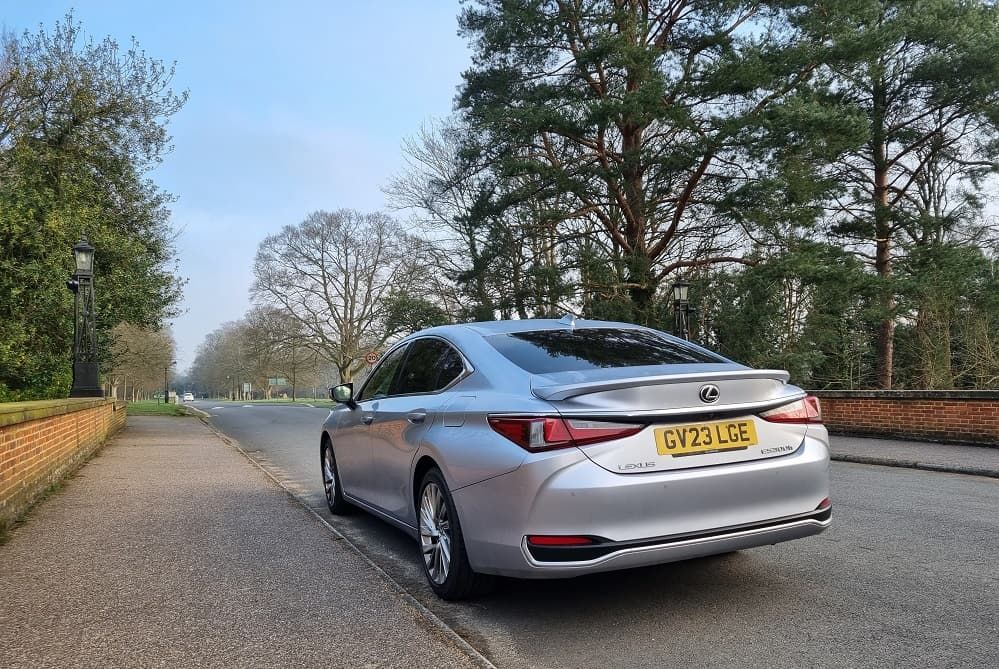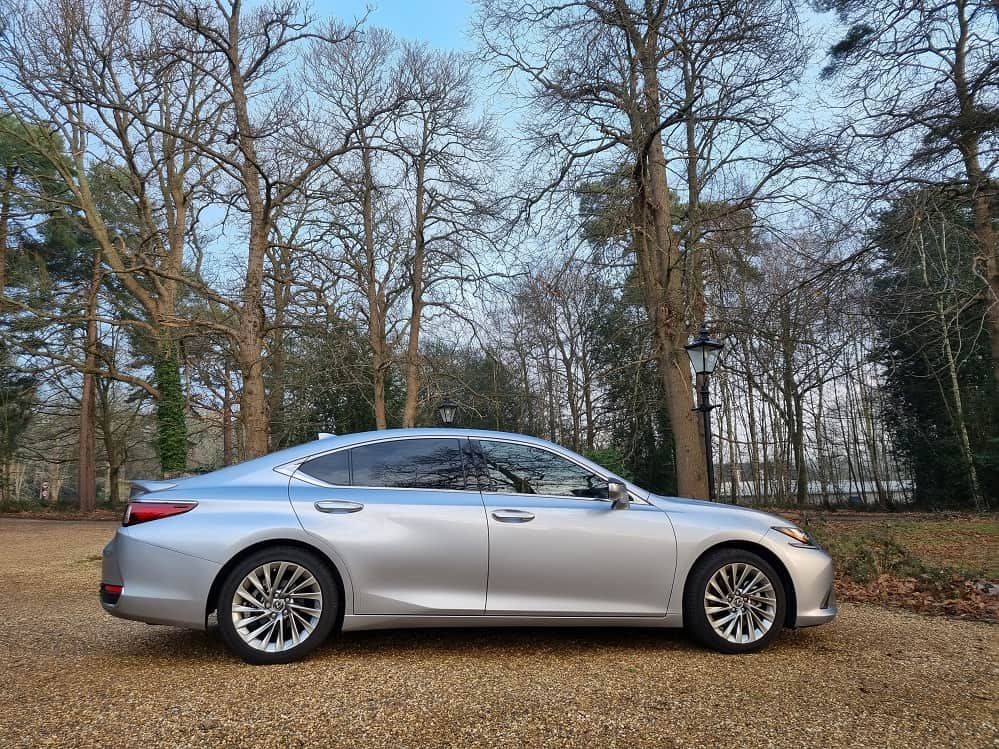Cars have become so increasingly fast that it’s odd to find a manufacturer producing a slow one. The mad scramble to electrification has opened up a world of earth shattering 0-60 times. For family saloon money you can have a car that will show a 15-year-old supercar a clean set of heels away from the lights. This had been happening before EVs, too. A well-heeled hot hatch was bloodying noses from 2012 onwards. It was doubtless one of the appeals of the Mk7 Golf R, offering a 0-60 time below five seconds for very reasonable money. It democratised performance, making it accessible to a much broader audience. This is relevant to the Lexus ES because Lexus has decided to walk in the opposite direction.
The Lexus ES is a thoroughly modern car in all but performance. Rather than using its hybrid capability to torque fill and offer greater acceleration, it very much uses it for efficiency gains. 0-62mph takes 8.9secs. On the flip side, over 175 miles of driving I achieved 42mpg. I could still be driving it now and I still wouldn’t have troubled a petrol station attendant. 42mpg might not sound groundbreaking in isolation, but the vast majority of my journeys were in urban settings. Commuting to work, school runs, shopping; the everyday scenarios you need a car for. In such scenarios, 0-60 times are utterly irrelevant. They’re also the enemy of consumption. As an entirely unfair point of comparison, on the commute to work in my previous review, the Audi S8, I achieved 12mpg.
So, what do you really need from a car? The Lexus ES asks a pertinent question in that regard. The 0-60 times sound great in the pub, but efficiency is great on the wallet.
Living with the Lexus ES
The Lexus ES is a self-charging hybrid. This means there’s no need to lug cables around and worry about charging. This is great, because charging can be a pain. It also leaves the faintly ridiculous scenario where business users get plug in hybrids to avoid tax, then never bother charging them. Like everything with our government, it’s clearly been very well thought through.

The ease of use extends to the interior of the Lexus ES, too. The tactility of the parts of the car you interact with are absolutely first rate. Just scrolling the wheel to change the volume of the radio is a wonderful experience. The indicator stalk clunks into place like no other. All the buttons click pleasingly.
The touch screen is very intuitive and unlike almost every other manufacturer, it’s not loaded with apps and menus. There’s satnav, media, phone and settings. That’s it. There are physical buttons for the HVAC, heated/ventilated seats and steering wheel and you can change the media and radio station via physical interfaces as well. The Lexus ES is supremely easy and satisfying to engage with.
The model tested being in top whack Takumi spec, it comes fully loaded. It’s always a point to mention with Lexus, but the Mark Levinson audio system is right up there with the very best in the business.
There are few more comfortable and serene cars than the Lexus ES. The seats are perfect for long journeys, the steering wheel has an unusual amount of adjustability and you can quickly find the perfect position. Heating and ventilation is a bonus.
In the rear, too, the luxury extends. Legroom is plentiful, the seats recline and controls in the rear armrest allow passengers to control their seats and the media. There are even sun blinds all round.
What’s the Lexus ES like to drive?
It’s quiet. That’s the first point to note. A noise reducing acoustic windscreen keeps the decibels down and the Lexus ES permanently calm. There’s also active noise control in the cabin which “reduces muffled engine sounds by producing an opposite phase sound through the speakers to cancel it out”. I don’t know what that means, but I do know that it works.

The Lexus ES performs equally impressively when it comes to ironing out the kinks in our roads. It’s not a miracle machine, but it handles speedbumps and potholes as serenely as you could reasonably expect.
You can dial the Lexus ES up to sport mode but, really, this is futile. The 2.5ltr four-cylinder engine just holds higher revs via the e-CVT transmission and does its utmost to defeat the active noise control. The dash goes red, too. It all looks and sounds far more dramatic than it actually is.
Far better, then, to embrace life in the slow lane. Not that you need to stay there on motorway journeys. The Lexus ES picks up better at such speeds than it does at slower speeds. It’s just that you’ll never feel any great sense of urgency. The relaxed demeanour of the Lexus ES encourages you to take things a little easier.
The shift between engine and battery propulsion is imperceptible. A green light in the dash lets you know you’re running on EV, but that’s all you’ll notice.
One final note on parking. The camera assistance is top drawer, with a transparent bird’s eye view of the car showing what’s underneath you. This is really handy in tighter street parking scenarios, since you can see where double yellows are and use all the available space. It also offers a brilliant view when reversing. It’s a really good system.
Conclusion
The ease of use, the comfort and the serenity are definitely the main selling points of the Lexus ES. By focussing squarely on these, Lexus has given the ES its own character. The points you interact with are so supremely thought out that the whole car feels remarkably compliant.

Aspects such as the way the boot soft closes are a joy to observe. Like everything else about the Lexus ES, it takes its time, before slowly pulling the lid shut with its final movement. There’s something oddly satisfying about witnessing this procedure.
If you’re looking for thrills and spills, then the Lexus ES isn’t the car for you. If you’re looking for an everyday companion that excels in the 99% of scenarios you’ll put it through, then it most likely is. The hybrid system delivers exceptional economy. The plethora of noise reducing and comfort-oriented features mean that, if you’re a regular motorway driver, few cars deliver such comfort in this bracket. It’s also a very easy buying decision; one engine choice, three trim levels and a few colour combinations.
Johan Cruyff once said that playing football is simple, but playing simple football is the hardest thing in the world. If we apply that to cars, then it certainly applies to the Lexus ES. Everything about it feels simple. It’s incredibly easy to use; it’s unfussy in every respect. Yet arriving at that is anything but easy. It requires thought, craft and intelligent engineering. The ES blends into the background, whether you’re inside it or out. It carries an air of subtle sophistication. In an age of attention seeking, perhaps it’s too subtle and too straightforward for its own good. It represents logic in an age of incoherence. That’s why everyone will buy more shouty and unreliable alternatives.

